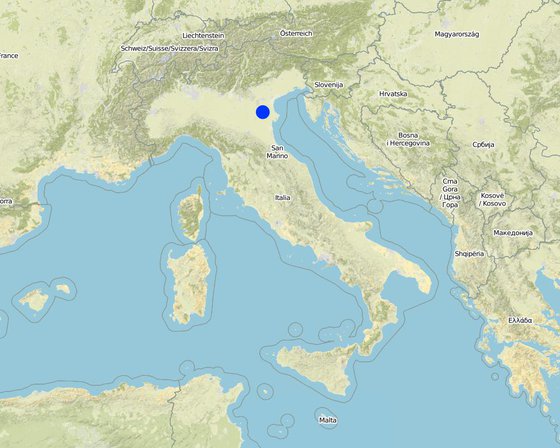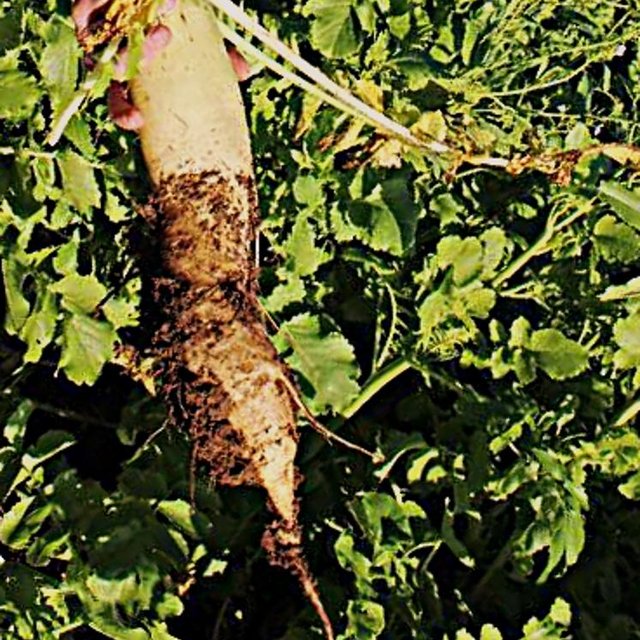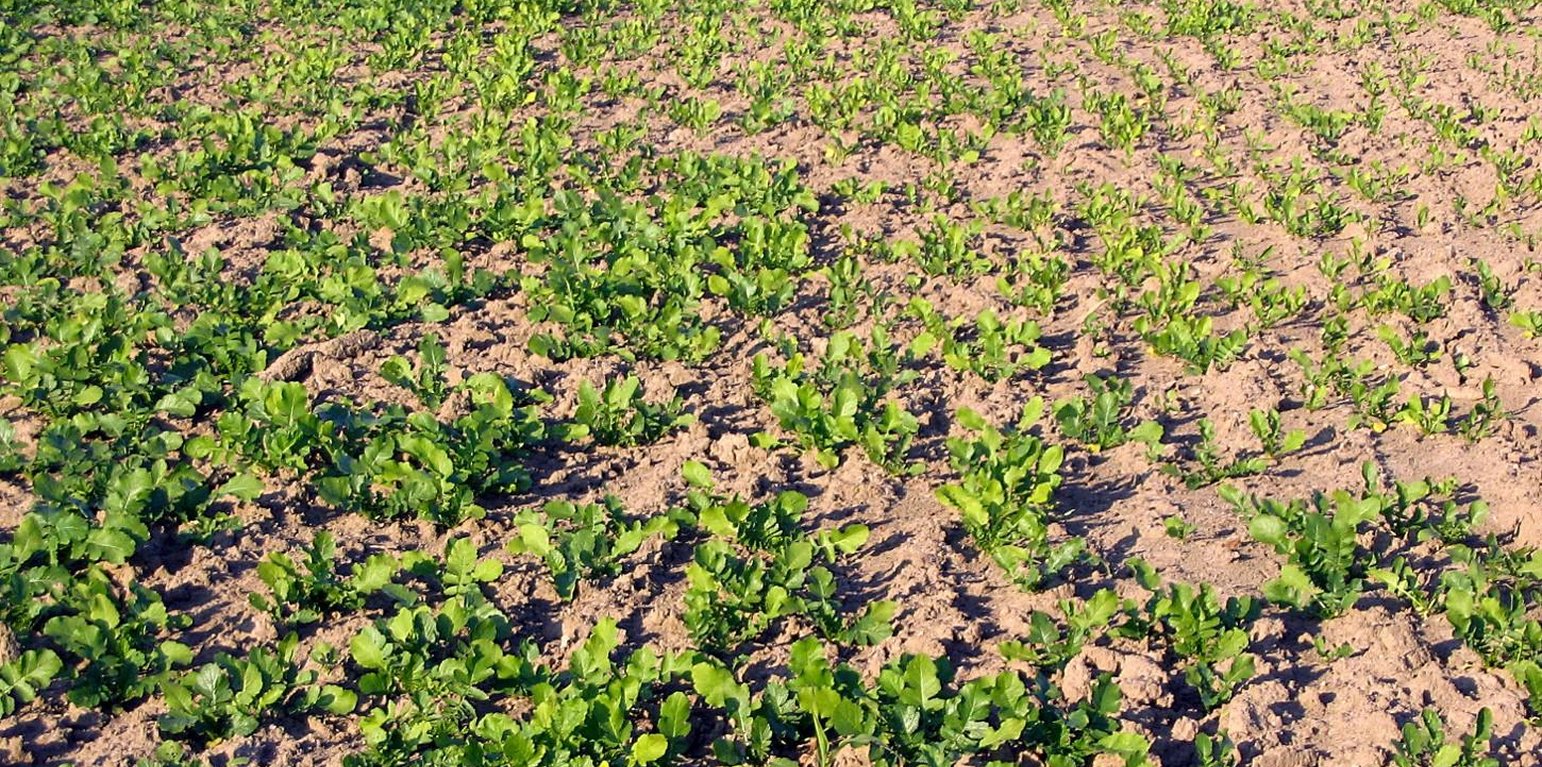Root-oriented cover crops
(Italy)
Cover-crop ad alta capacità produttiva di radici
Description
Cover crops with high root root growth capacity as a practice to improve soil quality
Cover crops will be selected by their capacity to address biomass production towards below-ground tissues. Growing alternative seasonal cover crops between annual crops have the potential to provide multiple benefits in a cropping system.
Purpose of the Technology: Highly developed rooting system will favour the soil quality: from an agronomic point of view, the soil will benefit from natural decompaction and structuring (especially if associated with no-till techniques) due to roots effect. Moreover, root-derived carbon is retained in the soils much more efficiently than are above-ground inputs (e.g. straw, crop residues). As a result, high and deep root productions will increase the more recalcitrant soil organic carbon (SOC) content as well as improve the nutrient cycle. From an environmental point of view, the increase of SOC content due to high root production will favour carbon sequestration within the soil profile and in turn mitigate GHG emisisons.
Establishment / maintenance activities and inputs: Following the critera that has already been adopted in the Veneto region for the continuos soil cover on croplands, the application of root-oriented cover crops will involve the alternation of autumn-winter cereals, rapeseed or other herbaceous crops with maize, soybean, sorghum etc. Cover crops that will be sown after the main culture will not be neither fertilized nor treated with pesticides during growing, while at the end of the crop cycle they will be buried as green manure in order to improve SOC, nutrient cycle and finally soil fertility.
Location

Location: Research trial in Veneto region, Italy, Italy
No. of Technology sites analysed:
Geo-reference of selected sites
Spread of the Technology:
In a permanently protected area?:
Date of implementation: less than 10 years ago (recently)
Type of introduction
-
through land users' innovation
-
as part of a traditional system (> 50 years)
-
during experiments/ research
-
through projects/ external interventions

Root-oriented cover crop
Classification of the Technology
Main purpose
-
improve production
-
reduce, prevent, restore land degradation
-
conserve ecosystem
-
protect a watershed/ downstream areas – in combination with other Technologies
-
preserve/ improve biodiversity
-
reduce risk of disasters
-
adapt to climate change/ extremes and its impacts
-
mitigate climate change and its impacts
-
create beneficial economic impact
-
create beneficial social impact
Land use
-
Cropland
- Annual cropping: cereals - maize, cereals - other, cereals - sorghum, legumes and pulses - soya, medicinal/ aromatic/ pesticidal plants and herbs, oilseed crops - sunflower, rapeseed, other
Number of growing seasons per year: 1
Water supply
-
rainfed
-
mixed rainfed-irrigated
-
full irrigation
Purpose related to land degradation
-
prevent land degradation
-
reduce land degradation
-
restore/ rehabilitate severely degraded land
-
adapt to land degradation
-
not applicable
Degradation addressed
-
soil erosion by water - Wt: loss of topsoil/ surface erosion
-
chemical soil deterioration - Cn: fertility decline and reduced organic matter content (not caused by erosion)
-
physical soil deterioration - Pc: compaction
-
biological degradation - Bc: reduction of vegetation cover
SLM group
-
improved ground/ vegetation cover
SLM measures
-
agronomic measures - A1: Vegetation/ soil cover
Technical drawing
Technical specifications
Establishment and maintenance: activities, inputs and costs
Calculation of inputs and costs
- Costs are calculated:
- Currency used for cost calculation: €
- Exchange rate (to USD): 1 USD = 0.9 €
- Average wage cost of hired labour per day: 21.00
Most important factors affecting the costs
Although machinery costs are the largest part of total ones, they are almost completely the same for systems adopting - or non adopting - the technology. As a result, additional seeds as cover crop and field labour for sowing are the main costs for implementation of the technology.
This technoilogy is hypothesized as an innovative application to improve the soil strructure, reduce its compaction as well as increase the SOC content. As a result, costs for maintenance and subsides were estimated on the basis of previous experiences in cover crop management. Therefore they are only hypothetical and do not correspond to a real situation.
Establishment activities
n.a.
Maintenance activities
-
Cover crops: chopping (Timing/ frequency: None)
-
Main crop: seedbed preparation (Timing/ frequency: None)
-
Main crop: harrowing (Timing/ frequency: None)
-
Main crop: weed control (Timing/ frequency: None)
-
Main crop: fertilisation (Timing/ frequency: None)
-
Main crop: harvesting (Timing/ frequency: None)
-
Main crop: sowing (Timing/ frequency: None)
Maintenance inputs and costs
| Specify input |
Unit |
Quantity |
Costs per Unit (€) |
Total costs per input (€) |
% of costs borne by land users |
|
Equipment
|
| Chopping cover crop |
ha |
1.0 |
343.0 |
343.0 |
75.0 |
| Seedbed preparation main crop |
ha |
1.0 |
191.0 |
191.0 |
75.0 |
| Harrowing main crop |
ha |
1.0 |
63.0 |
63.0 |
75.0 |
| Weed control main crop |
ha |
1.0 |
44.5 |
44.5 |
75.0 |
| Harvesting main crop |
ha |
1.0 |
152.0 |
152.0 |
75.0 |
| Sowing main crop: |
ha |
1.0 |
121.0 |
121.0 |
75.0 |
|
Plant material
|
| Seeds main crop |
ha |
1.0 |
191.0 |
191.0 |
75.0 |
| Seeds cover crop |
ha |
1.0 |
191.0 |
191.0 |
75.0 |
|
Fertilizers and biocides
|
| Biocides |
ha |
1.0 |
125.0 |
125.0 |
75.0 |
| Fertilizer |
ha |
1.0 |
254.0 |
254.0 |
81.0 |
| Total costs for maintenance of the Technology |
1'675.5 |
|
| Total costs for maintenance of the Technology in USD |
1'861.67 |
|
Natural environment
Average annual rainfall
-
< 250 mm
-
251-500 mm
-
501-750 mm
-
751-1,000 mm
-
1,001-1,500 mm
-
1,501-2,000 mm
-
2,001-3,000 mm
-
3,001-4,000 mm
-
> 4,000 mm
Agro-climatic zone
-
humid
-
sub-humid
-
semi-arid
-
arid
Specifications on climate
Thermal climate class: temperate
Slope
-
flat (0-2%)
-
gentle (3-5%)
-
moderate (6-10%)
-
rolling (11-15%)
-
hilly (16-30%)
-
steep (31-60%)
-
very steep (>60%)
Landforms
-
plateau/plains
-
ridges
-
mountain slopes
-
hill slopes
-
footslopes
-
valley floors
Altitude
-
0-100 m a.s.l.
-
101-500 m a.s.l.
-
501-1,000 m a.s.l.
-
1,001-1,500 m a.s.l.
-
1,501-2,000 m a.s.l.
-
2,001-2,500 m a.s.l.
-
2,501-3,000 m a.s.l.
-
3,001-4,000 m a.s.l.
-
> 4,000 m a.s.l.
Technology is applied in
-
convex situations
-
concave situations
-
not relevant
Soil depth
-
very shallow (0-20 cm)
-
shallow (21-50 cm)
-
moderately deep (51-80 cm)
-
deep (81-120 cm)
-
very deep (> 120 cm)
Soil texture (topsoil)
-
coarse/ light (sandy)
-
medium (loamy, silty)
-
fine/ heavy (clay)
Soil texture (> 20 cm below surface)
-
coarse/ light (sandy)
-
medium (loamy, silty)
-
fine/ heavy (clay)
Topsoil organic matter content
-
high (>3%)
-
medium (1-3%)
-
low (<1%)
Groundwater table
-
on surface
-
< 5 m
-
5-50 m
-
> 50 m
Availability of surface water
-
excess
-
good
-
medium
-
poor/ none
Water quality (untreated)
-
good drinking water
-
poor drinking water (treatment required)
-
for agricultural use only (irrigation)
-
unusable
Water quality refers to:
Is salinity a problem?
Occurrence of flooding
Characteristics of land users applying the Technology
Market orientation
-
subsistence (self-supply)
-
mixed (subsistence/ commercial)
-
commercial/ market
Off-farm income
-
less than 10% of all income
-
10-50% of all income
-
> 50% of all income
Relative level of wealth
-
very poor
-
poor
-
average
-
rich
-
very rich
Level of mechanization
-
manual work
-
animal traction
-
mechanized/ motorized
Sedentary or nomadic
-
Sedentary
-
Semi-nomadic
-
Nomadic
Individuals or groups
-
individual/ household
-
groups/ community
-
cooperative
-
employee (company, government)
Age
-
children
-
youth
-
middle-aged
-
elderly
Area used per household
-
< 0.5 ha
-
0.5-1 ha
-
1-2 ha
-
2-5 ha
-
5-15 ha
-
15-50 ha
-
50-100 ha
-
100-500 ha
-
500-1,000 ha
-
1,000-10,000 ha
-
> 10,000 ha
Scale
-
small-scale
-
medium-scale
-
large-scale
Land ownership
-
state
-
company
-
communal/ village
-
group
-
individual, not titled
-
individual, titled
Land use rights
-
open access (unorganized)
-
communal (organized)
-
leased
-
individual
Water use rights
-
open access (unorganized)
-
communal (organized)
-
leased
-
individual
Access to services and infrastructure
employment (e.g. off-farm)
drinking water and sanitation
Impacts
Socio-economic impacts
drinking water availability
irrigation water availability
Socio-cultural impacts
Improved livelihoods and human well-being
Ecological impacts
nutrient cycling/ recharge
emission of carbon and greenhouse gases
Cost-benefit analysis
Benefits compared with establishment costs
Benefits compared with maintenance costs
Short-term returns
very negative
very positive
Long-term returns
very negative
very positive
Climate change
Gradual climate change
annual temperature increase
not well at all
very well
Adoption and adaptation
Percentage of land users in the area who have adopted the Technology
-
single cases/ experimental
-
1-10%
-
11-50%
-
> 50%
Of all those who have adopted the Technology, how many have done so without receiving material incentives?
-
0-10%
-
11-50%
-
51-90%
-
91-100%
Has the Technology been modified recently to adapt to changing conditions?
To which changing conditions?
-
climatic change/ extremes
-
changing markets
-
labour availability (e.g. due to migration)
Conclusions and lessons learnt
Strengths: land user's view
-
Allows natural control of weeds
How can they be sustained / enhanced? Higher seeding rate
-
Naturally prevent compaction
Strengths: compiler’s or other key resource person’s view
-
Improves soil structure
How can they be sustained / enhanced? Selection of root-oriented species
-
Improves soil fertilty, biodiversity and organic matter content
How can they be sustained / enhanced? Selection of species with low root decomposition rate
-
Improves knowledge on soil cover benefits and agroecology
How can they be sustained / enhanced? Improve farmers' education
-
Prevents erosion
How can they be sustained / enhanced? Maintenance of cover crop
Weaknesses/ disadvantages/ risks: land user's viewhow to overcome
-
High costs of field management (sowing, purchase of seeds)
Subsidies
Weaknesses/ disadvantages/ risks: compiler’s or other key resource person’s viewhow to overcome
-
Increases the competition for water resources during dry seasons
References
Reviewer
-
Fabian Ottiger
-
Alexandra Gavilano
Date of documentation: April 23, 2015
Last update: Sept. 4, 2019
Resource persons
-
Nicola Dal Ferro - SLM specialist
-
Francesco Morari - SLM specialist
Full description in the WOCAT database
Documentation was faciliated by
Institution
- University of Padova (UNIPD) - Italy
Project
- Preventing and Remediating degradation of soils in Europe through Land Care (EU-RECARE )
Key references
-
USDA, Plant guide - SUNN HEMPUSDA, Plant guide - SORGHUMUSDA, Plant guide - OILSEED RADISH: http://plants.usda.gov/java/












